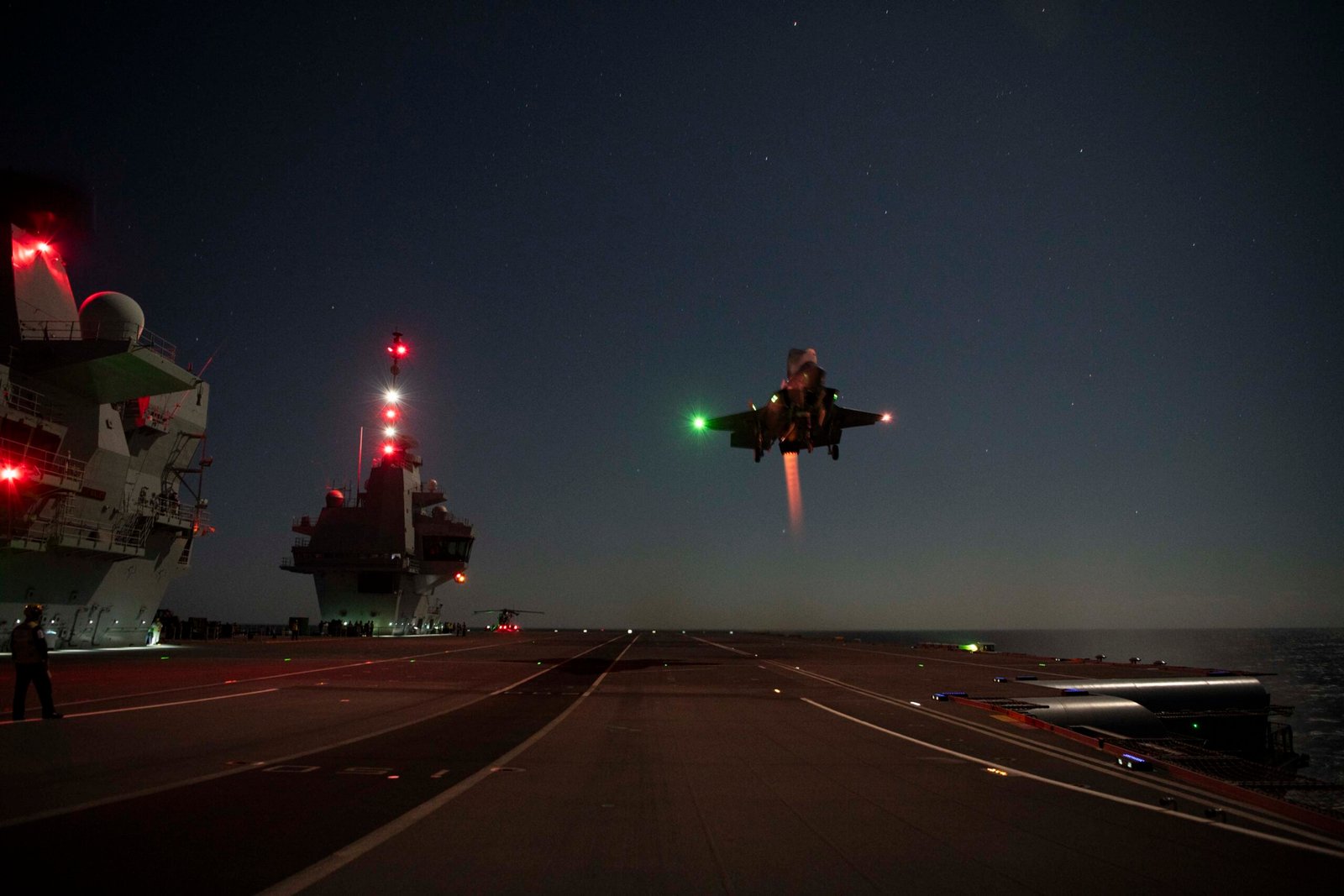The world’s most advanced naval jets have departed Britain’s biggest warship having laid the groundwork for expanded carrier operations in the future.
After four weeks of intensive trials, training and data gathering, specially-modified F-35B Lightning stealth fighters have flown home from HMS Prince of Wales off the east coast of the United States.
Coupled with a wealth of other activity – US Marine Corps MV-22 Ospreys tilt-rotors, CH53 Super Stallions and Viper gunships and supply drone trials – the Portsmouth-based warship’s flight deck has never been busier than it has this autumn.
Her deployment – WESTLANT 2023 – focused on expanding the capabilities of both of the UK’s aircraft carriers, in particular the ability to launch and land F-35s faster, in worse weather conditions by day and night.
Known as DT-3 (Development Test, phase three; phases one and two were conducted aboard HMS Prince of Wales’ older sister HMS Queen Elizabeth) they saw F-35s from the US-based Integrated Test Force, piloted by US Marine Corps aviators, flying on and off the carrier’s deck carrying different payloads – including fully ‘bombed up’ with a full complement of (dummy) weapons – in varying weather conditions.
The key tests involved ‘shipborne rolling vertical landings’ (SVRL) – rather than coming to a hover before slipping across the deck over the landing spot and dropping gently down, an F-35B lands rather like an aircraft touching down on a runway, using a combination of vertical thrust and brakes to bring it to a halt.
It means a Lightning can return from a mission without having to dump fuel or ditch unused ordnance.
That means less time to refuel/rearm between flights – increasing the carrier’s ability to launch strike sorties.
In all 60 rolling landings were conducted, including ten by night. Other trials successfully completed include: 20 backwards landings (facing towards the stern), ten at night; nearly 150 take-offs by day and night in various weather conditions/sea states.
Experts on both sides of the Atlantic will analyze the masses of data collected over the coming months, but the ship’s command team are confident the trials have ‘expanded the envelope’ of F-35 operations.
“The last four weeks at sea have been the busiest HMS Prince of Wales has ever seen,” said Commanding Officer Captain Richard Hewitt.
“The test points achieved will not only improve UK F35-B operations, but those of our F35-B program partners and allies as well.”
Commander Jamie Elliott, who planned and oversaw the trials, said that more than 150 tests were carried out, all of which “will inform any future decisions about F35-B operational clearance to take off and land heavier, operate in heavier sea states, and turn the jets around faster for more sorties.”
US Marine Corps Major Alex Horne was one of the handful of pilots conducting the aerial maneuvers which garnered the much-needed data.
“It was a brilliant opportunity to fly aboard HMS Prince of Wales and participate in flight trials designed to contribute to pushing the boundaries of 21st-Century aircraft carrier operations,” he said.
“It was great to witness first-hand the interoperability of the F-35 and the carrier in conditions ranging from high deck motion to high wind over deck, and from heavyweight and maximum weight launches to slick wing night flying.”
A 180-strong team supported the tests which Andrew Maack, Chief Test Engineer at Pax River, the US air base which is home to the F-35 Integrated Test Force, hailed as “highly successful”.
“I was proud of how the team collectively performed from day one,” he said.
“Team members recognized the value of our mission, appreciated the importance of this detachment, and committed to the hard work to ensure we accomplished safe, secure, and efficient flight test aboard the UK’s newest aircraft carrier.”
HMS Prince of Wales will remain in the USA for the next few weeks to conduct further aviation trials – this time with pilotless aircraft – as well further combined training with the US Marine Corps.
The ship is due to return home before Christmas.

